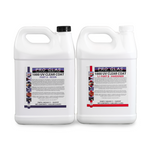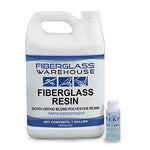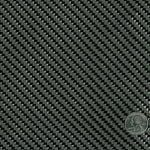You have no items in your shopping cart.
For DIY enthusiasts and crafters alike, deep pour epoxy resin has become a sought-after material for its versatility, durability, and the ability to pour in thicker layers. Whether you're embedding beloved objects or creating stunning river tables, epoxy resin allows for a boundless realm of creativity. However, working with this material can sometimes be as tricky as it is rewarding. From unexpected yellowing to an unsatisfactory cure, several issues can arise that may dampen your crafting spirits.
But fear not! In this comprehensive guide, we'll walk you through common problems encountered with deep pour epoxy resin, uncover the reasons behind them, and offer tested solutions to ensure your next project is nothing short of perfection.
When Epoxy Resin Cures Yellow: Reasons and Solutions
The Problem:
Is your epoxy curing with an unsightly yellow tint? We've got the solutions you need to prevent it from happening again.
The Reasons:
Here's the deal: that yellowing can occur for a few reasons.
-Pouring Too Thick: Pouring the epoxy too thick can generate excess heat during the curing process.
-Aged Hardener: If the hardener has aged and turned yellow before you even mixed it, you're setting yourself up for trouble unless you are using with pigments.
-Improper Heat Dissipation: If heat is not dissipated properly during curing, you'll experience the same issue as pouring the resin too thick.
The Solution:
-When pouring, keep it under 2 inches thick (unless using an epoxy that is formulated for an even deeper pour). This will help control the heat and prevent that unwanted yellow tint.
-If the hardener appears aged, only use with colored pigments, not for projects where you need a crystal clear finish.
-Circulate the air around the surface. Proper airflow can help dissipate heat and keep your epoxy looking crystal clear. At the same time, make sure dust and contaminates are not floating around as this could end up in your epoxy.
-Keep a close eye on temperatures. Don't let it exceed 170°F, as this can result in permanent yellowing.
When Epoxy is Soft and/or Tacky in Spots: Reasons and Solutions
The Problem:
Has one of your epoxy projects cured soft or tacky in places? This indicates improper curing. This can be devastating if this happens on one of your projects. Let us help you with some reasons and solutions to avoid this issue.
The Reasons:
-Inaccurate Measurement: An incorrect ratio of resin to hardener interrupts the chemical reaction. It is imperative to be exact when measuring Part A and Part B or you can end up with spots that are not cured correctly.
-Incomplete Mixing: Failing to mix the components thoroughly can leave uncured spots.
The Solution:
-Diligently follow the measuring ratio specified by your epoxy resin manufacturer. It is extremely important that you measure out both Part A and Part B exactly. Make sure to check and see if the manufacturer recommends measuring out by weight or by volume.
-Ensure thorough mixing, paying particular attention to the consistency and scraping the sides of your container as you mix.
When Epoxy Resin Does Not Cure Smooth or Level: Reasons and Solutions
The Problem:
Ideally, epoxy resin should cure to a smooth, level finish. However, sometimes the results are uneven or bumpy. If this happens to your project, there are several reasons.
The Reasons:
-Uneven Surface: This seems like a given but if your work surface isn’t completely level, your resin won’t be either.
-Too Much Heat: Resin generated too much heat causing an uneven surface.
-Working with Epoxy When Curing : Epoxy was spread or touched during the ‘gel’ stage.
The Solution:
-Before pouring, use a level to make sure the surface is flat and even.
-Make sure not to mix and pour too much resin at one time
-Make sure that you do not move the epoxy resin around once it has started curing.
When Epoxy Resin Cracks: Reasons and Solutions
The Problem:
Have you ever seen a crack in an epoxy resin project? Cracking doesn’t happen often but it can occur in cured epoxy resin, damaging the visual and physical integrity of the project.
The Reasons:
-Rapid Temperature Changes: Sudden shifts can cause the resin to expand and contract, leading to cracks.
-Pouring Too Thick: Exceeding the maximum pour depth can lead to excessive heat buildup and cracking.
The Solution:
-Avoid any room temperature changes or humidity changes when working with epoxy resin.
-Follow the manufacturer’s guidelines on pour depth. For thicker layers, consider layering multiple pours.
-Unfortunately, if your epoxy resin does crack, you will need to re-do the project. By following the above and avoiding large temperature changes as well as not pouring the resin too thick, you should prevent this from happening on your own project.
When Cured Epoxy Resin is Cloudy: Reasons and Solutions
The Problem:
Instead of a crystal-clear finish, sometimes the resin cures to a cloudy appearance. Why does that occur?
The Reasons:
-Cold Temperatures: If resin is too cold when mixed, it will be cloudy. This often happens in the winter. The room temperature and the temperature of the surface and resin should be 75 degrees Fahrenheit
-Moisture Contamination: Moisture entering the resin, either from the air or materials, can cloud the cure.
-Trapped Air Bubbles: Not allowing bubbles to escape can result in a cloudy finish.
The Solution:
-Raise the temps of the resin by submerging jugs in a warm water bath. Make sure the room temperature as well as the surface are heated up to 75 degrees Fahrenheit also.
-Store your resin and work in a low-humidity environment. Pre-dry objects that will be embedded.
-Use a heat gun or torch to gently warm the resin after pouring, helping bubbles rise to the surface and pop.
Final Thoughts
With these simple solutions, you'll have flawless, vibrant epoxy every single time. By understanding and navigating the potential pitfalls, you can ensure that your projects remain a source of pride and enjoyment. Remember, every crafting endeavor is a learning experience, and with each pour, you're one step closer to mastering the art of resin.
Check out our ProGlas 1105 Deep Pour Epoxy Resin User Guide if you need more info on using a deep pour epoxy.
Still have some questions? Don’t hesitate to reach out either by email- sales@fiberglasswarehouse.com or by phone- 833-669-7899.










